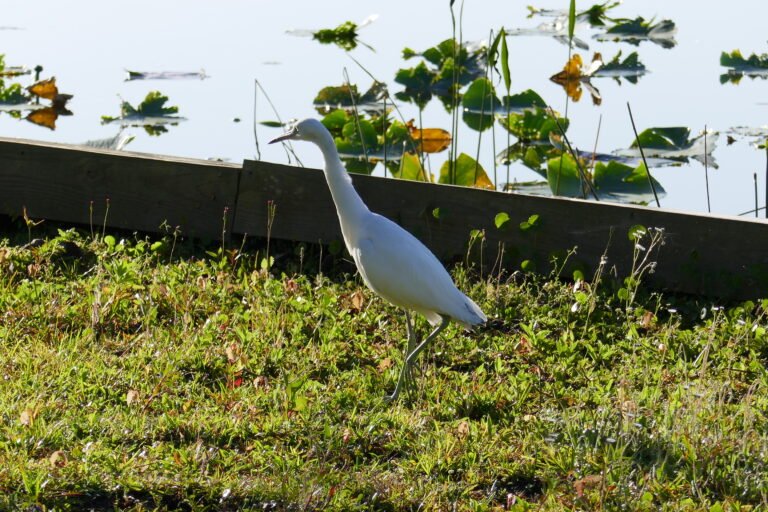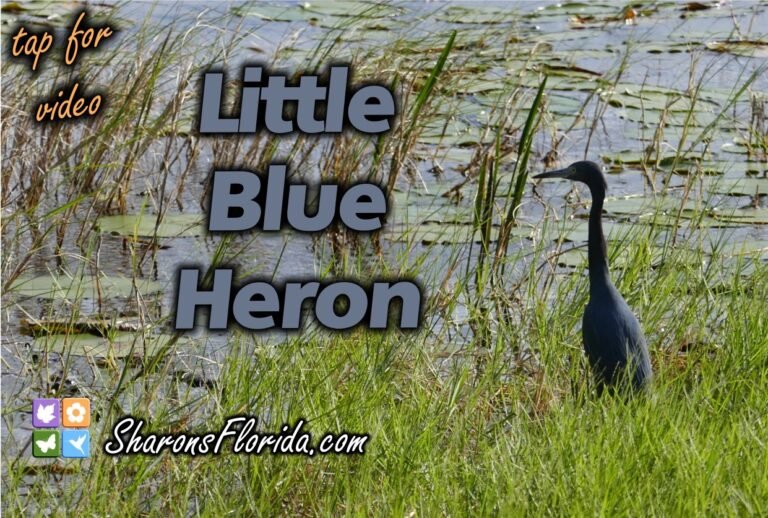
Egretta caerulea
(Little Blue Heron)
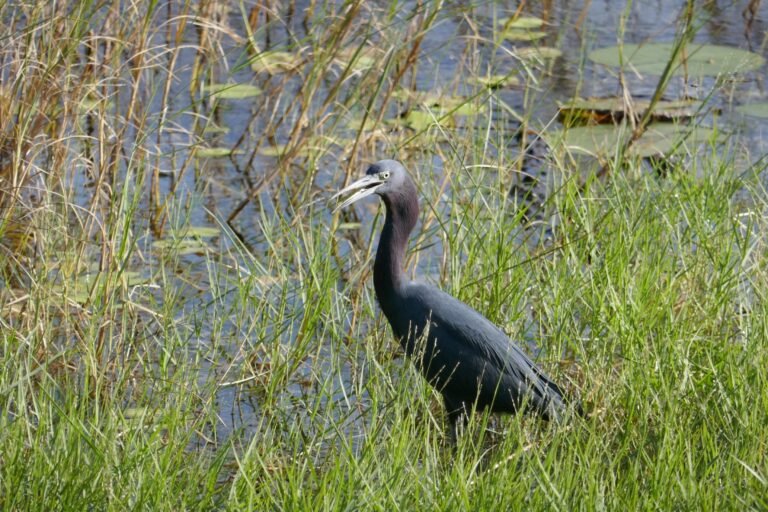
Description
The little blue heron is a medium sized water bird that grows to a height of 24 inches with a wing span of about 40 inches.
They have slate blue gray bodies and maroon-purplish necks.
Their bills are pale blue to dark gray with a black tip and their legs are olive in color.
Immature little blue herons are white and can be mistaken for snowy egret. Just remember snowy egrets have darker legs, and bills, with yellow feet.
Mature little blue heron are often confused with the reddish egret. Reddish egrets live in saltwater, brackish estuaries and coastal regions. They are rarely, if ever, seen inland whereas little blue heron may be found in coastal areas.
Latin Name and Family
Egretta caerulea is the latin, or scientific, name.
Little blue herons are found in the Ardeidae, or heron, family.
“Native American Heron Mythology
Each Native American tribe has their own set of customs and traditions. But one thing they all have in common is a reverence for animals and nature. For many tribes, such as the Iroquois and Cherokee, the heron symbolizes patience, good fortune, and peacefulness. ….In addition, for the Cherokee and other tribes, the heron symbolizes harmony and peace. Thus, Cherokee diplomats wear herons feathers (compared to warriors who wear eagle feathers.)” [1] Heron Meaning and Symbolism and the Heron Spirit Animal
by Kristen M. Stanton, December 29, 2022
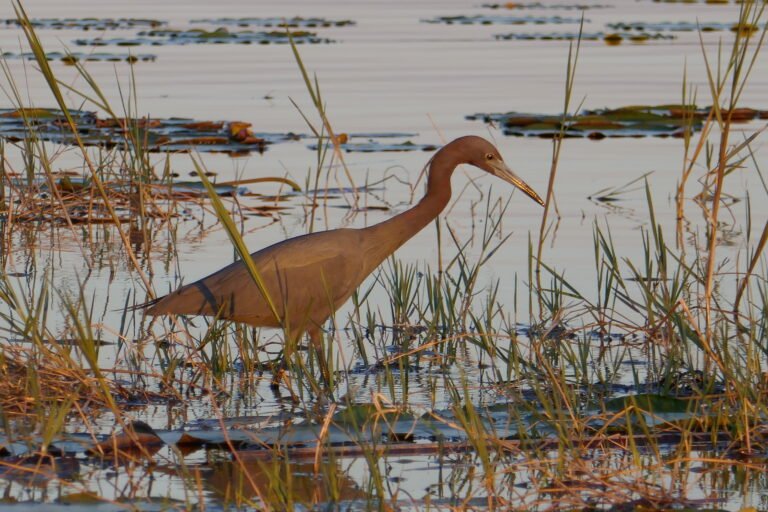
Behavior
The little blue heron is a medium sized water bird found in Florida year round.
They inhabit wetlands where they are in a constant search for food. They fly back and forth between feeding, preening and roosting sites within their territory.
They can be found scouring the water’s edge for food as well as the shrubbery in yards and gardens. They, at least in my experience, have learned to take advantage of human landscaping for feeding spots and will visit landscaping and around buildings for prey. The individual in my yard tolerates my gardening while he searches for food, as long as I move a bit slower, don’t get too close or make too much noise.
During the breeding season the male’s head and neck coloration becomes intense and turns even more reddish purple and their legs darken to black. Quite a change from their normal look.
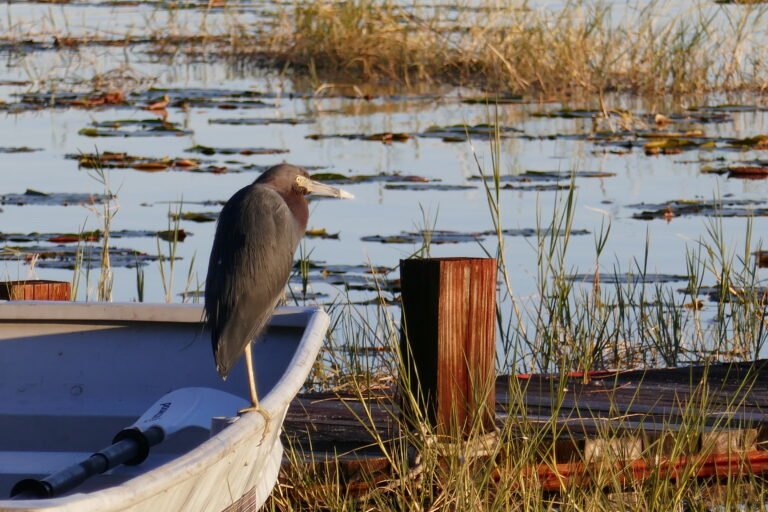
Habitat
The little blue heron’s habitat includes wetlands such as lake and pond margins, canals, and roadside ditches that collect water.
They can also be found in coastal saltwater wetlands.
Range
Little blue herons are year round residents in Florida although some may migrate short distances within the state.
They are found in the southeastern United States, along the Gulf Coast from Florida to Guatemala, and the Atlantic Coast from Florida to New Hampshire, the Caribbean, and Central and South America.
“Birds that breed in the interior Southeast migrate to Central and South America and the Caribbean; individuals along the Gulf Coast, Florida, and elsewhere disperse only short distances.” [2]
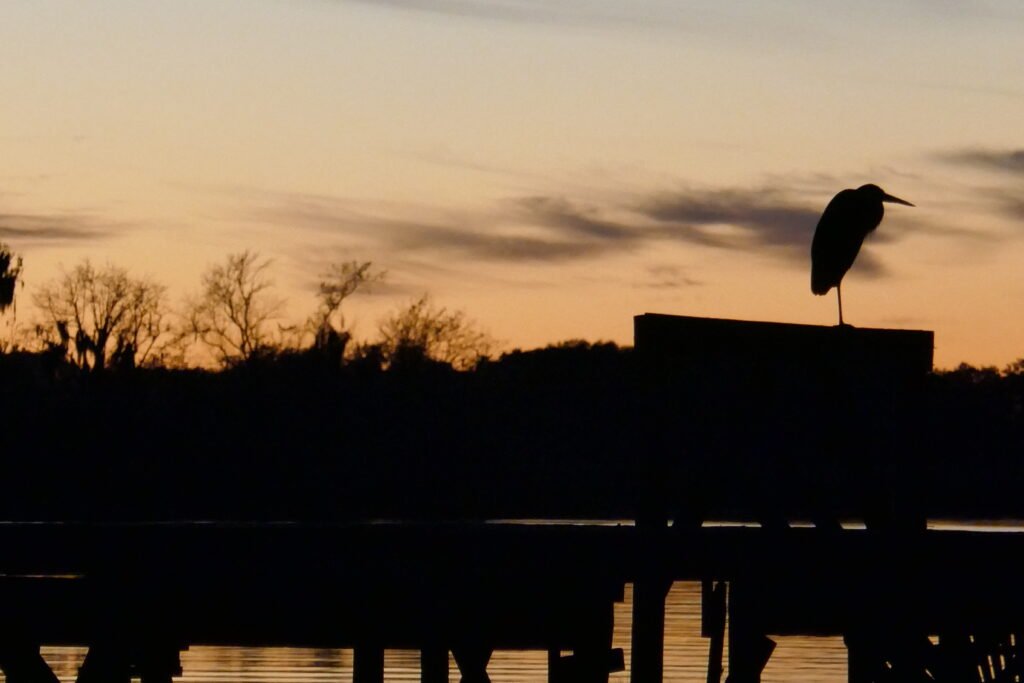
Food
Little blue herons are opportunistic feeders and will eat eat just about anything they can catch and swallow.
Their preference, at least in my observations, appear to be frogs, lizards and shrimp but they also eat fish and insects.
They hunt during the day and can be seen moving quickly between their favorite feeding spots. Once they find a suitable spot they stalk it, very slowly and patiently, often swaying their heads to mimic aquatic plant movement and use slow deliberate movements to avoid spooking their prey. Sometimes they seem to have infinite patience if the catch is especially desirable.
The little blue heron that uses my green space as its territory visits the fence lines of every house that has foliage where lizards and frogs may be hiding. He moves quickly from yard to yard and if he comes up empty he will move to the lake, or canal, edge. I have to say he eats very well.
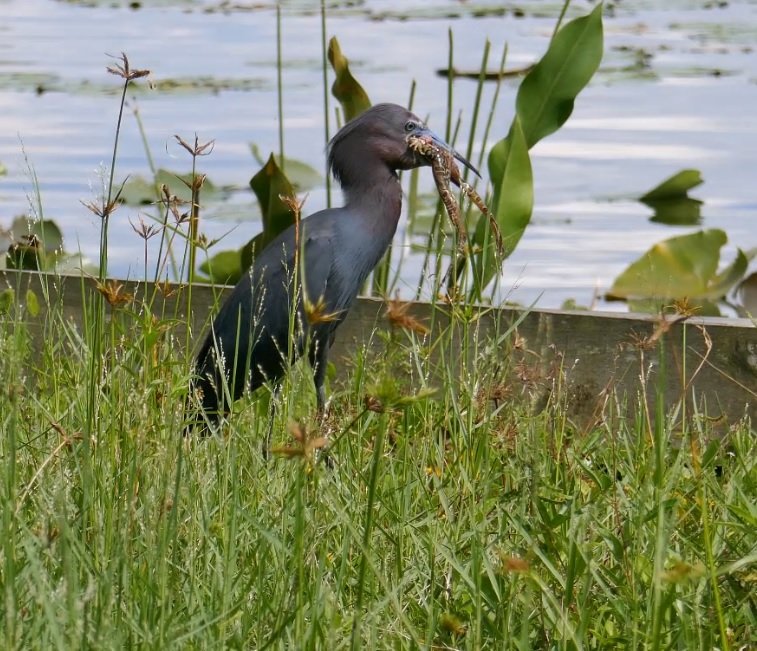
In case you would like to know about the shrimp the little blue heron eats here’s a list of the six freshwater shrimp we have in Florida waters.
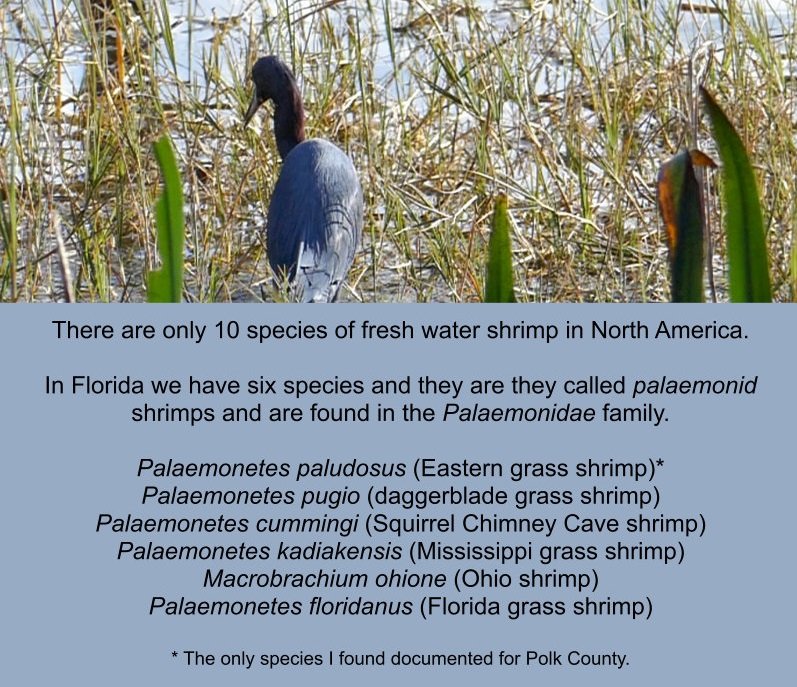
Nesting and Young
Little blue herons are not colony breeders like some herons are. They build a platform nest with sticks in the shrubs and trees in wetland areas.
They usually lay from 3 to 6 eggs and incubation lasts 22 to 24 days.
The eggs are incubated by both parents and then the young hatchlings are also tended to by both parents. The juveniles usually leave the nest at 12 days and fledge within 4 weeks.
Little blue heron juveniles are white and are often confused with snowy egrets, however, the snowy egret has a black bill and yellow feet. Sometimes juvenile little blue herons will feed along side snowy egrets to take advantage of any food the egrets may have missed. Since they are white and blend in the egrets do not usually kick them out of the immediate area as they would with an adult little blue heron.
Once the little blue heron matures and starts to molt they will get gray patches and look piebald and splotchy.
